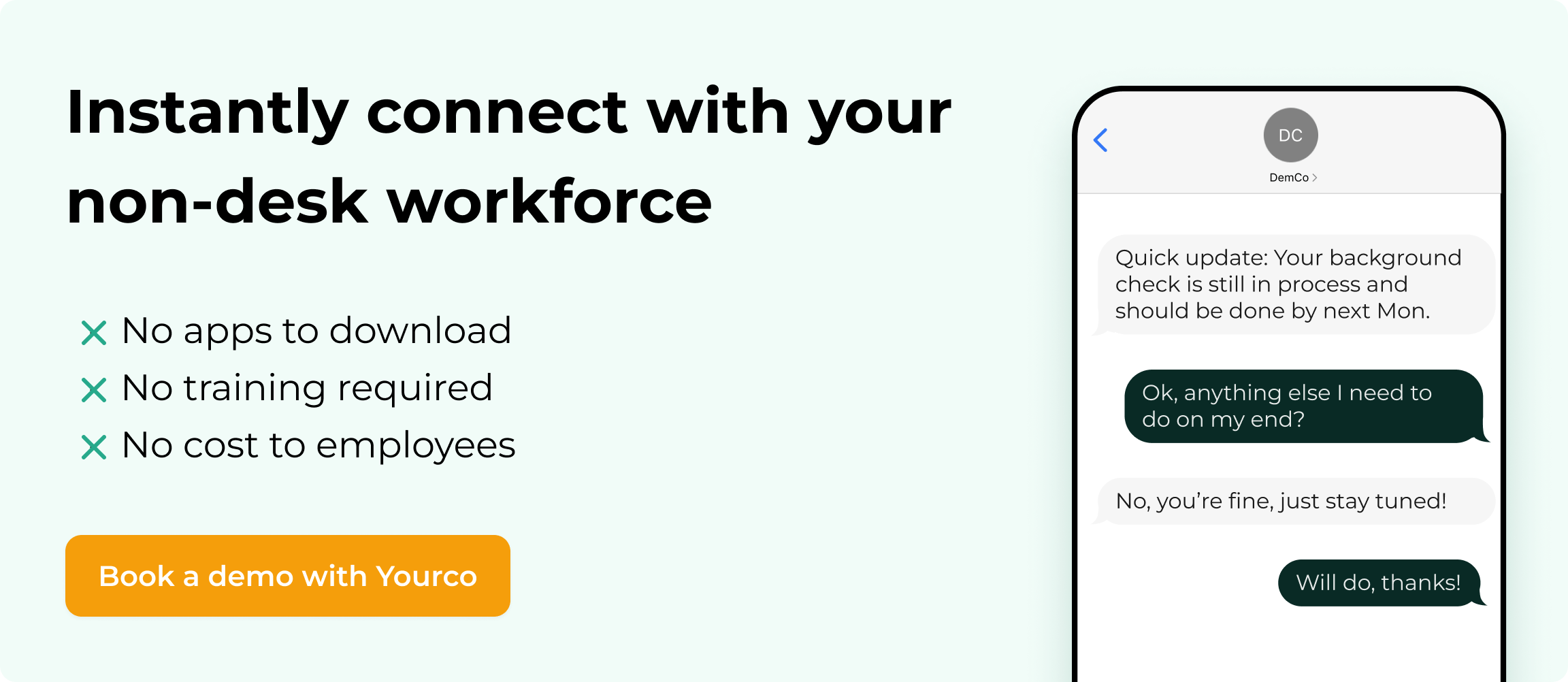Automation Processes: A Step-by-Step Implementation Guide


Imagine this: your HR team manually processes payroll for hours each week, your operations staff juggles inventory across multiple spreadsheets, and your IT department handles endless password reset requests. Meanwhile, those strategic initiatives you care about remain untouched because everyone's buried in repetitive tasks that could be streamlined with the right approach. This reality creates bottlenecks that slow progress and drain resources from more valuable work.
You're not fighting this battle alone. Across industries, organizations that align their process improvement initiatives with clear business objectives are significantly more successful, turning tedious manual work into efficient workflows that free your team for valuable work. From streamlining payroll and onboarding in HR to simplifying procurement and cutting IT helpdesk volume through self-service, the right approach delivers real returns while boosting accuracy and compliance.
This guide gives you a detailed seven-step framework for building company-wide capabilities. Whether you need to fix one pain point or transform entire departments, you'll find practical strategies, proven practices, and real examples that make process improvement a powerful growth tool.
Automation 101: Concepts, Benefits & Ideal Use Cases
Workflow streamlining turns repetitive manual work into efficient, reliable processes that run themselves. Whether you're handling payroll, managing inventory, or processing IT requests, choosing the right solution makes all the difference between quick wins and lasting change.
Two main types of process improvement serve different needs. Business Process Automation (BPA) redesigns entire workflows across departments and systems, orchestrating complex processes end-to-end. Think of it as a full-service car wash where multiple steps work together seamlessly. Robotic Process Automation (RPA) uses software bots to handle specific, repetitive tasks humans typically perform, like data entry or file transfers. This works more like the quick rinse option for targeted efficiency.
Scope makes the difference. BPA connects people, systems, and data across your organization to eliminate handoffs and delays. RPA mimics human actions for individual tasks, delivering faster results with less complexity. Most organizations start with RPA for quick wins, then expand to BPA for deeper operational changes.
Process improvement delivers measurable results in four key areas. Productivity jumps when manual work disappears and processes finish faster. Compliance improves through consistent rule application, automatic documentation, and adherence to industrial regulatory compliance requirements. Costs drop as labor needs decrease and fewer errors require fixes. Error rates fall because streamlined systems don't have off days or make typos.
The best candidates share three traits: high volume, repetitive execution, and clear rules. In HR, payroll processing and employee onboarding check all these boxes with predictable steps and consistent data requirements. Time and attendance management reduces manual timesheet reviews and ensures accurate wage calculations, though complex cases might still need human judgment.
Operations teams see immediate value from streamlining inventory management and order processing. Stock levels trigger reorders automatically, and customer orders flow from receipt to fulfillment without manual steps. These processes work perfectly because they follow predictable patterns with minimal human judgment.
IT departments gain the most from improving user access provisioning and password resets, which consume significant helpdesk resources. Patch management and system monitoring represent ideal opportunities because they demand consistent execution and immediate response to predefined conditions.
Success comes from targeting high-frequency, low-complexity processes first. When you can clearly define inputs, outputs, and decision points, you've found a candidate that will deliver measurable results and justify your investment from day one.
The Seven-Step Implementation Framework
Success in process improvement depends on a structured approach that transforms your current workflows into streamlined, efficient operations. This seven-step framework takes you from identifying opportunities to achieving measurable results across your organization.
Step 1 – Identify tasks and processes that can be automated
Picking the right candidates for your initial efforts sets you up for success. Examine your current workflows and find tasks that consume substantial time while requiring minimal decision-making. High-volume, repetitive tasks with predictable triggers make your best opportunities.
Look for processes where manual handling creates frequent errors or bottlenecks. HR teams often spend hours sourcing and filtering resumes from job boards, copying candidate information into tracking systems, and sending follow-up emails. This involves repetitive data entry, consistent evaluation criteria, and standard communication templates—making it perfect for improvement.
Use this mini-checklist to spot opportunities: Does the task follow the same steps each time? Can you clearly define inputs and expected outputs? Does it take more than two hours per week? Would streamlining reduce errors or speed completion? If you answered yes to most questions, you've found a strong candidate.
Step 2 – Set your organizational goals
Connecting improvement initiatives with clear business objectives boosts your success odds. Instead of implementing technology for technology's sake, link each initiative to measurable outcomes that matter to stakeholders. This alignment delivers real value while securing leadership support.
Get key stakeholders to define what success looks like for your organization. Set specific, measurable KPIs that directly tie to business impact. If you aim to reduce operational costs, establish clear metrics like "reduce invoice processing time by 40%" or "eliminate 15 hours of manual data entry per week." These concrete targets make tracking progress and showing ROI easier.
Strategic goal alignment helps prioritize competing opportunities. When multiple processes could benefit from improvement, focus first on those directly supporting your primary business objectives. This ensures you're not just making processes faster, but making the right processes faster.
Step 3 – Choose the right tools
Selecting the appropriate platform means balancing ease of use with functionality requirements. No-code platforms work best for business users with limited technical experience, offering drag-and-drop interfaces and pre-built templates for common processes. Low-code solutions provide greater customization and scalability for complex workflows that may evolve over time.
Evaluate platforms based on integration capabilities with existing systems, security features, and scalability potential. Consider whether you need simple workflow management or sophisticated process orchestration across departments. Key selection criteria include ease of use, integration capabilities, security compliance, and total cost of ownership.
When streamlining purchase order approvals, test a platform's ability to connect with your ERP system, handle approval routing based on dollar amounts, and send notifications to stakeholders. Testing real scenarios during evaluation ensures the platform meets actual needs rather than just checking feature boxes.
Step 4 – Change Management
Even the most technically sound solution fails without proper change management. Start communicating early about upcoming changes, focusing on how improvements will make employees' jobs easier rather than threatening their roles.
Develop training programs matching people's technical skills. Provide multiple learning formats including hands-on workshops, quick reference guides, and peer mentoring. Address resistance by involving employees in the design process and highlighting how improvements eliminate frustrating, repetitive tasks.
When implementing enhanced safety protocol reminders in manufacturing, success depends on training floor supervisors first, then having them lead the rollout with their teams, ensuring alignment with established safety operating procedures on the shop floor.
Step 5 – Measure and monitor
Continuous monitoring ensures your streamlined processes deliver expected results while revealing opportunities for further improvement. Establish clear KPIs before implementation and track them consistently to demonstrate ROI and catch potential issues early. Regular measurement helps refine processes and maximize your investment value.
Create feedback loops capturing both quantitative metrics and qualitative insights from users. Track process completion times, error rates, and user satisfaction scores. Quick corrective action when metrics show problems prevents small issues from becoming major operational disruptions.
When improving HR recruitment processes, track metrics like time-to-fill positions, candidate satisfaction scores, and recruiter productivity. If candidate quality declines after implementing resume screening tools, you can quickly adjust filtering criteria to better match hiring standards while maintaining efficiency gains.
Step 6 – Scale & integrate
Planning for scalability from the start prevents outgrowing your solutions as your organization evolves. Consider how improved processes will handle increased volume, additional users, and integration with new systems. Regular review of integration success helps identify optimization opportunities and ensures continued value delivery.
Create standardized approaches replicable across different departments or locations. This standardization reduces implementation time for future projects while maintaining consistency. Document successful integration patterns to speed up deployment of similar solutions.
When scaling procurement improvements from a single department to organization-wide implementation, ensure your platform handles increased transaction volumes while maintaining security and compliance. Plan integration touchpoints with financial systems, vendor management platforms, and approval workflows to create seamless end-to-end processes.
Step 7 – Continuous improvement loop
Success requires ongoing refinement and optimization. Establish regular feedback collection from both system users and process stakeholders. Use this feedback for iterative improvements that enhance efficiency and user satisfaction over time.
Create structured review cycles examining both technical performance and business impact. Schedule quarterly assessments to evaluate whether improved processes still align with changing business needs. Keep teams informed of improvements to maintain engagement and adoption.
Monthly reviews of enhanced safety compliance checking might show certain inspection points consistently generating false positives. By refining rules based on this feedback, you can reduce unnecessary alerts while maintaining safety standards. This continuous improvement approach ensures your solutions evolve with your organization rather than becoming static implementations gradually losing effectiveness.
Common Pitfalls & How to Avoid Them
Process improvement projects fail for predictable reasons. Most organizations make the same mistakes, but you don't have to be one of them. Here are the six most common traps and exactly how to sidestep them.
Scaling Difficulties appear when your pilot works perfectly for 10 users, but crashes with 100 employees. Performance degrades as you add more processes or departments. Start with scalability in mind from day one. Test your platform under realistic load conditions and choose tools that can grow with your organization. Set up usage monitoring and performance alerts, then create a scaling roadmap before you need it.
Implementation Errors occur when workflows break from missing steps, incorrect data mapping, or poor integration between systems. Map your current processes thoroughly before improving them. Run extensive testing with real data and real users, involving end-users in design to catch gaps early. Create a rollback plan for every improvement and keep manual processes as backup until you've proven the enhanced version works consistently.
Trying to Implement Everything at Once happens when you attempt to transform payroll, onboarding, scheduling, and inventory management simultaneously, overwhelming your team and budget. Start small with one high-impact process. Master it completely before moving to the next. Build momentum through quick wins rather than trying to transform everything overnight. If you're already overcommitted, pause new projects and focus resources on completing current ones successfully.
No Goal Management creates situations where you improve processes without clear success metrics, making it impossible to know if your efforts are working or worth the investment. Define specific, measurable goals before starting any project. Track KPIs like time saved, error reduction, or cost savings. Set up regular review cycles to assess progress. If you're missing baseline measurements, establish them for your current processes immediately and create dashboards to track performance going forward.
Shadow IT emerges when departments use unauthorized tools without IT approval, creating security risks and integration nightmares. Establish clear governance policies for tool selection. Create an approved vendor list and procurement process. Make it easy for departments to request new tools through proper channels. Conduct an audit of current tools in use, then work with departments to either approve existing tools or migrate to sanctioned alternatives.
Scope Creep develops when your simple employee scheduling project expands to include time tracking, payroll integration, performance reviews, and compliance reporting, becoming unmanageable. Define project boundaries clearly at the start. Create a formal change request process for any additions. Communicate the importance of staying focused on original objectives. Document all requested additions and schedule them as separate phases, completing your current scope before considering expansions.
Most failures stem from rushing the process or trying to solve too many problems at once. Start small, measure results, and scale thoughtfully. This builds confidence across your organization and sets you up for long-term success.
Special Considerations for Non-Desk Teams
Process improvement principles work for any workforce, but non-desk teams need different implementation strategies. Field workers, warehouse staff, and frontline employees face connectivity issues, device variety, and digital skill gaps that traditional rollouts don't address.
SMS communication overcomes challenges like connectivity, device variety, and digital skill gaps more effectively than many other approaches. Unlike many employee communication apps, text messages reach most smartphones without requiring internet access, app downloads, or extensive technical training, though exceptions exist in areas without cellular coverage or with certain device configurations. While email sits unread and complex platforms confuse users, SMS gets through immediately and works reliably.
The results speak for themselves. A manufacturing company cut missed shifts by 35% by sending late employee alerts and shift reminders via text 24 hours before work. A construction firm boosted safety compliance by 28% using weather alerts and equipment updates via text. For data collection, workers simply reply to text prompts instead of navigating complicated forms.
Change management for non-desk teams succeeds when field supervisors become champions. These trusted leaders address job security concerns during toolbox talks and shift changes, showing how improvements reduce paperwork rather than eliminating positions.
Yourco's SMS platform handles these unique requirements by delivering reliable communication that works on any device without additional training or complexity. By implementing an SMS solution for your non-desk workforce, you'll achieve better engagement and compliance without the barriers created by more complex technologies.
Yourco: The Ultimate Solution for Streamlined Communication and Process Improvement
Yourco provides the ideal communication platform to streamline operations, reduce manual tasks, and boost efficiency, especially for non-desk employees. With its SMS-first approach, Yourco ensures seamless communication without the barriers of internet access, complex apps, or technical training. By integrating Yourco into your process improvement initiatives, you can enhance productivity, improve compliance, and reduce operational costs—all while empowering your non-desk teams with a reliable and easy-to-use solution.
Whether you’re looking to automate repetitive HR tasks, improve safety compliance, or streamline inventory management, Yourco’s simple yet powerful features such as AI-powered translations, HRIS integrations and built in security features support your goals without overwhelming your workforce. Ready to transform your organization's communication and operations? Contact us today for a demo and see firsthand how Yourco can drive efficiency and growth across your teams.
Try Yourco for free today or schedule a demo and see the difference the right workplace communication solution can make in your company.
Frequently Asked Questions
How can I determine if my team is ready for process improvement?
Look for signs like increasing errors in routine tasks, team members expressing frustration with repetitive work, or missed deadlines due to process bottlenecks. Readiness also shows in leadership support and willingness to invest time in documenting current workflows. Teams dealing with high turnover in roles handling repetitive tasks are particularly good candidates, as streamlining can reduce the burden of training new employees while maintaining consistency.
What's the difference between workflow automation and digital transformation?
Workflow automation focuses on improving specific processes by reducing manual steps and streamlining workflows. It delivers targeted efficiency gains in particular areas like payroll processing or inventory management. Digital transformation represents a broader organizational shift that reimagines how technology integrates with every aspect of operations. While workflow automation might fix one department's paperwork problems, digital transformation would connect systems across departments to create entirely new operational capabilities.
How can I communicate with my non-desk workforce without relying on emails or complex apps?
SMS communication is the most effective solution for non-desk workers. Unlike emails that go unread or complex apps that create barriers, text messages reach workers on devices they already use and understand. Yourco provides a simple SMS platform that delivers immediate notifications about schedules, safety alerts, and operational updates directly to workers' phones without requiring special training or technical skills. This approach ensures critical information reaches your entire team regardless of location or technical ability.



